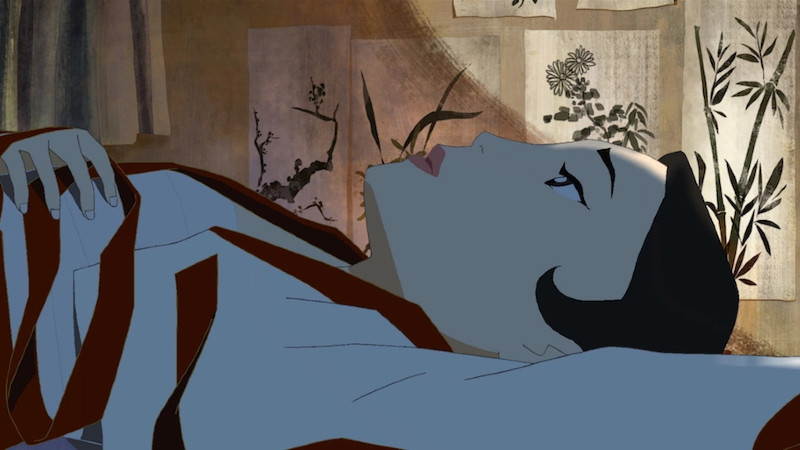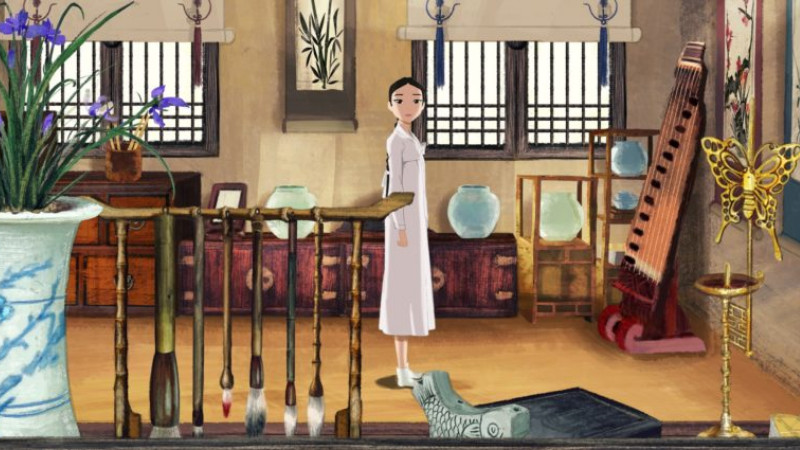Director – Ahn Jae-huun – 2020 – South Korea – 85m
***1/2
From the Annecy 2020 Online Animation Festival
Rural woman Mohwa has had two children, first a boy Wook-yi then a girl Nang-yi, by two different fathers. She is a woman of contradictions: free spirited in love, more traditional in her everyday beliefs. She is revered locally as a healer, the person to whom people go when they have a sick relative. Mohwa is a shamaness who practises exorcisms on the sick to rid them of whatever evil spirits plague them. And she has an impressive track record. She’s also an alcoholic.
Since she is a long way down the economic food chain, she fears for Wook-yi’s future and packs him off to a Buddhist temple. His hitherto healthy younger sister falls ill and when she recovers three years later she has lost her hearing. Nang-yi also possesses considerable skill as a painter.
Wook-yi, meanwhile, hates the temple and leaves it to go to the more forward looking Seoul where he wanders into a Christian church and is converted. When he returns home, he talks to the largely silent Nang-yi about “who made human?” and “The One And Only God”, even getting her to say the words “One And Only God”. He pushes a copy of the Bible towards her along the walkway of the porch outside the house.
Their mother however sees things rather differently. Her initial suspicions give way to horror that her son has been possessed by evil spirits, that Jesus ghost. From this point on, the irreconcilable conflict is set in place with both believing their view of the world, mutually exclusive to the other view, is the true one. Wook-yi puts much effort into supporting a local church in its efforts to preach the gospel to the surrounding populace while Mohwa continually performs rituals to cast the demons out of him.

The film is based on a Nobel Prize-winning literary source and parts of the story feel as though they’d work much better in a book than on the screen. When Wook-yi talks about his faith, it’s terribly wordy as he reads directly from or quotes the Bible. If shots of such things scarcely light up the screen, Christian church trappings such as an interior complete with pews and Western religious paintings hanging on the walls, distinctive spires or bells being rung to summon the Sunday faithful fare rather better.
That side of the film is starkly contrasted with the colourful ceremonies and interior life of Mohwa as she performs various shamanistic rituals alone in the forest or in the homes of families with sick loved ones who she must cure. In the woods she is surrounded by hanging ribbons of many different colours. At people’s houses, she dances in traditional costumes and recites words over and over again.
Stranger still to a Western audience, this is a musical with characters constantly breaking into song to heighten the effects of the drama. This doesn’t sound like it would work, yet somehow it does. And proves highly effective.
The script demonstrates a fair grasp of both sets of beliefs and their accompanying world views. It remains to be seen how that will be perceived in the post-Christian West which has, for good or ill, largely abandoned the dogmatic tenets of Christianity in much the same way that, in the course of this film, much of the populace slowly abandons the shamanistic world view held by Mohwa until only she is left to perform rituals and ceremonies in which no-one else any longer believes.
Although there are moments of violence, for the most part this is a surprisingly gentle film. There are classic live action Korean movies that knock it for six in the area of primitive folk religion – take a look at Ieoh Island (Kim Ki-young, 1977) – but its understanding of two very different religious systems goes at least some way in compensating.
The Shaman Sorceress plays in the Annecy Animation Festival which is taking place in a special online edition this year right now. Here’s the trailer:
Festivals
2020
Annecy Animation Festival special online edition:
Monday, June 15th to Tuesday, June 30th.
Festival trailer:
